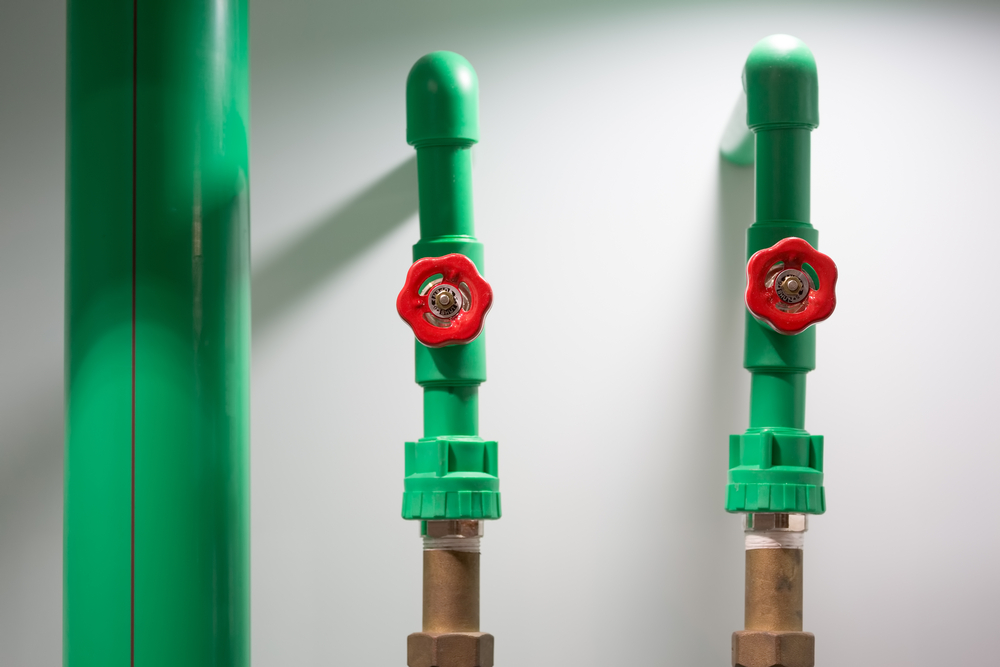You’ve always loved your home, but lately, your old plumbing may be causing trouble. Every time you turn on the tap, you might hear the pipes groan, and sometimes, rusty water could flow out. After dealing with a little leak that flooded your bathroom, it’s clear that it might be time for a change. Instead of patching up old pipes that are well past their prime, why not consider something better?
At a recent dinner with friends, you might have heard about something new “PPRC pipes”. These pipes are designed to last, are resistant to rust, and can handle high temperatures with ease. Switching to PPRC pipes will make a significant difference in your home’s water system.
In this blog, we’ll look at why now could be the perfect time for you to upgrade to PPRC pipes and fittings. Whether you’re looking to improve water quality, prevent leaks, or ensure a reliable plumbing system, these modern pipes can provide the solution your home deserves. Say goodbye to plumbing headaches and welcome to a more efficient, durable system.
What Are PPRC Pipes and Why Are They Popular?
PPRC (Polypropylene Random Copolymer) pipes are becoming more popular in residential water systems due to their durability and efficiency. These pipes, made of a form of plastic that resists chemical deterioration, are well-known for their durability and wear resistance.
Homeowners like PPRC pipes because they provide multiple advantages that are especially helpful in residential plumbing. PPRC pipes and fittings have several benefits, like a longer lifespan and minimal maintenance requirements. Also, they are safe for drinking water and easy to install. Their cost-effectiveness and environmental benefits contribute to their popularity, which makes them a more common choice in modern homes.
Why Is It Time to Upgrade? Key Benefits of PPRC Pipes for Your Home
Are you looking for it is time to replace your old pipes with PPRC pipes? Here are some strong reasons why upgrading to PPRC pipes is a good decision for residential water systems.
Durability and Longevity
One of the primary reasons to choose PPRC pipes is their exceptional durability. Made from high-quality plastic, these pipes can withstand extreme temperatures, making them ideal for hot and cold water systems. Unlike metal pipes, PPRC pipes don’t rust or corrode, which means they last longer and require fewer replacements over time.
High-Pressure Resistance
PPRC pipes handle high-pressure water systems well, making them suitable for homes with advanced plumbing systems. Their flexibility ensures they don’t crack or leak under pressure, which reduces the risk of pipe bursts or leaks.
Cost-Effectiveness
Not only are PPRC pipes durable, but they’re also cost-effective. With fewer repairs and replacements needed, you save money on maintenance costs. Additionally, the installation process is relatively straightforward, reducing labor expenses.
Environmentally Friendly
PPRC pipes are made from recyclable materials, which makes them an eco-friendly choice for your home. They also contribute to energy efficiency by minimizing water leakage, which helps conserve water and reduce your utility bills.
Safety and Health
Since PPRC pipes resist bacterial growth and don’t release harmful chemicals, they are safe for drinking water. These pipes meet safety standards for potable water systems, ensuring your family’s health isn’t compromised.
“The right plumbing system is more than just pipes and fittings—it’s an investment in your home’s future.”
What Are the Common Applications of PPRC Pipes in Modern Homes?
PPRC pipes are versatile and can be used in various applications throughout your home. Here are some common uses:
- Hot and Cold Water Supply: PPRC pipes are ideal for both hot and cold water supply lines due to their resistance to high temperatures and pressure.
- Heating Systems: Many modern homes use PPRC pipes for radiant floor heating and other heating systems, as they handle high temperatures effectively.
- Water Distribution: Whether for residential or commercial spaces, PPRC pipes provide reliable water distribution that minimizes the risk of leaks.
- Drainage Systems: These pipes can be used for drainage in areas prone to chemical exposure since they resist chemical reactions well.
- Irrigation Systems: PPRC pipes are also popular in garden and lawn irrigation systems, offering durability in outdoor environments.
What are the Installation Processes of PPRC Pipes?
Installing PPRC pipes is simple, but it’s essential to follow each step carefully to ensure a smooth setup. Here are the detailed steps involved in installing PPRC pipes and fittings in a residential setting:
- Preparation: Measure the area where the pipes will be installed and cut the pipes to the required length. Be careful when you clean and smooth the edges.
- Heating: Use a pipe welding tool to heat both the pipe and the fitting. If you want the seal’s integrity, this step is essential.
- Joining: Quickly join the heated ends, aligning them properly. Hold them in place until the plastic cools and hardens.
- Checking Seals: Once the connections are made, inspect each joint for proper alignment and sealing.
- Testing the System: Turn on the water to check for any leaks. Make sure that every connection is safe and operating as it should.
PPRC Pipes vs. Other Pipes: Which Is Better for Residential Water System?
| Features | PPRC Pipes | Other Pipes (Copper, PVC, Galvanized Steel) |
| Durability | Highly durable, resistant to corrosion, and chemicals. | Varies. Copper is durable but can corrode; PVC is less heat-resistant. |
| Installation | Lightweight, flexible, and easy to install with fewer joints. | Heavier (copper, steel) and often require more complex fittings. |
| Heat Resistance | Can handle both hot and cold water applications. | Copper performs well, but galvanized steel may rust; PVC is limited to cold water. |
| Cost | Affordable and cost-effective for most homeowners. | Copper is more expensive; galvanized steel requires more maintenance. |
| Environmental Impact | Non-toxic and recyclable, making it an eco-friendly choice. | PVC is recyclable, but galvanized steel and copper may have higher environmental impacts. |
PPRC pipes and fittings are an ideal choice for residential water systems due to their high durability, ease of installation, cost-effectiveness, and appropriateness for both hot and cold water applications. Other pipes, such as copper or PVC, have advantages, but may not offer the same balance of performance, cost, and environmental sustainability.
Why PPRC Pipes Are Ideal for Residential Water Systems?
Here are five major reasons why PPRC pipes are considered ideal for residential water systems:
- Temperature Resistance: PPRC pipes can handle a wide range of temperatures without warping or breaking. This feature makes them suitable for both hot and cold water applications, enhancing versatility.
- Flexibility: Unlike some other types of pipes, PPRC pipes offer flexibility that reduces the likelihood of cracks under pressure. This quality also makes them easier to install in areas with tight spaces.
- Low Maintenance: Due to their chemical resistance, PPRC pipes require minimal maintenance. They don’t react with the minerals in water, which means you’re less likely to face clogging or corrosion issues.
- Lightweight and Easy Handling: PPRC pipes are lightweight, making them easy to transport and install. This quality not only reduces labour costs but also simplifies the entire installation process.
- Cost-Efficiency in the Long Run: While the initial cost might be similar to other pipes, the long-term savings from reduced maintenance and longer lifespan make PPRC pipes a cost-effective choice for homeowners.
“A durable and efficient plumbing system is an essential foundation for any comfortable home.”
How Do PPRC Pipes and Fittings Enhance Residential Water Systems?
PPRC pipes and fittings are designed to work together perfectly, which creates a strong and leak-free water distribution system. The fittings ensure tight seals, reducing the risk of leaks and increasing the system’s overall efficiency. These fittings are highly durable due to their resistance to corrosion and chemicals. In residential contexts, PPRC fittings join numerous pipe sections, which creates a cohesive system that distributes water throughout the residence. The fittings are also straightforward to replace or repair, adding to the ease and reliability of PPRC pipes.
Who Is Adamjee DuraBuilt, and Why Are They the Right Choice for Your PPRC Pipe Needs?
Adamjee DuraBuilt is a popular manufacturer of premium plumbing solutions. As a well-known PVC pipe fittings manufacturer in Pakistan, they provide durable piping solutions that fulfil the highest quality standards. Their PPRC pipes and fittings are precision-engineered to provide long-lasting solutions. Adamjee DuraBuilt products are noted for their durability and versatility, which makes them ideal for a variety of residential and commercial applications. Choosing Adamjee DuraBuilt means investing in a plumbing solution that improves the performance of your water system, and minimizes maintenance requirements.
Let’s Recap
Switching to PPRC pipes provides immediate and long-term benefits to your home’s water supply. These pipes are ideal for current household plumbing demands since they are more durable, cost-effective, and environmentally friendly. Choosing high-quality PPRC pipes and fittings indicates investing in a water system that will support your home’s comfort and efficiency for years to come.
Incorporating PPRC pipes from Adamjee DuraBuilt means you’re opting for a product that stands out in quality and reliability. From reduced maintenance to eco-friendly benefits, PPRC pipes are a smart upgrade for any residential setting.
Make the switch to PPRC pipes today and ensure your home’s water system is built to last.
Be sure to check back for more exciting news on Bioneerslive!




